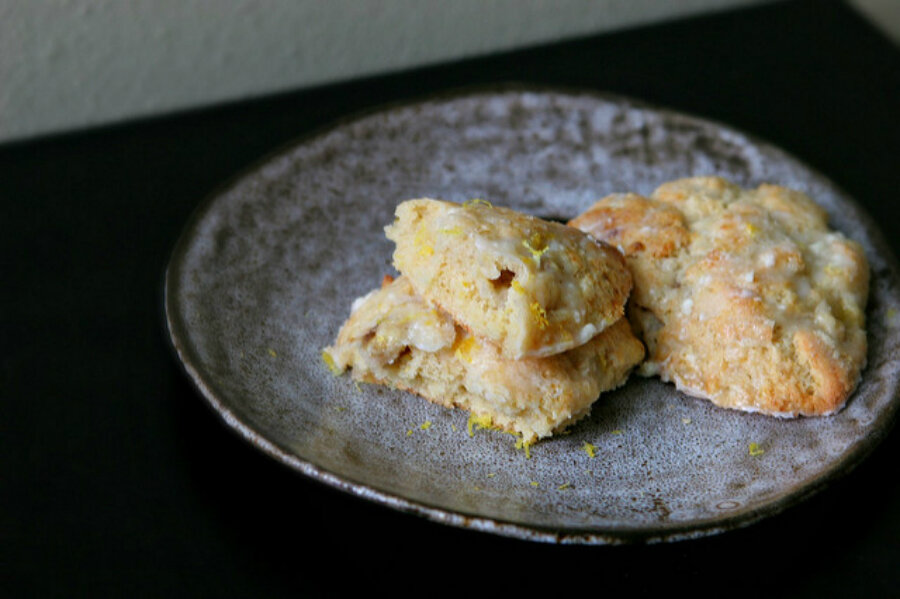Banana lemon scones
Loading...
Yancey and I were watching late-night TV the other night. (I'm the last one to join the party, but I'm finally smitten with Jimmy Fallon.) I was full from dinner and drowsy. And yet, unbelievably, I was thinking about breakfast the next morning. About how I didn't want a kale smoothie or rewarmed Irish oats. How I wanted to smell something in the oven and the kids to come running up the stairs asking what it was.
I had a foggy memory of this scone recipe from an edition of Fine Cooking that's long since disappeared. I'm an insatiable magazine reader, but I don't keep them. It might threaten our marriage. So I sometimes clip or scan recipes, but mostly I just enjoy them in the moment and move on. Thank God for the internet and for YMCA members who will read any old donated crap in order not to focus on their workouts.
I was skeptical that one diced banana would do the trick, but these were so stunning. They had a delicate banana aroma and flavor, but totally different than banana bread or banana cake. And, if you really pay attention, bananas are actually a little acidic, and the lemon paired perfectly. I have hardly been known to peel a banana and eat it out of hand, but I can't resist banana desserts and baked goods.
We've had some sweet family time this weekend – cooking, a little road trip with lots of singing, naps, New York Times. And, despite my skepticism, Spring has got to come. It can't help but get closer.
Banana Lemon Scones
Adapted from Fine Cooking. I added 1/4 c. brown sugar for two reasons – to make them sweeter and to make them more tender. It had the effect of the scones spreading ever so slightly, but it was worth it. If you want sturdier guys, leave it out. Most scones aren't good the next day, but these are delicious as the banana keeps them moist.
For the scones:
2 cups flour
1/4 cup granulated sugar
1/4 cup brown sugar
1 tablespoon finely grated lemon zest
1/2 teaspoon kosher salt
6 tablespoons cold unsalted butter, cut into pieces
1 medium ripe (but not mushy) banana, cut into 1/4-inch dice
3/4 cup + 2 tablespoons heavy cream(and more for brushing)
coarse white sanding sugar (optional)
For the glaze:
3/4 cup powdered sugar
1-1/2 tablespoons lemon juice
1 tablespoon butter, softened
pinch kosher salt
1. Heat oven to 375 degrees F., and line a baking sheet with parchment paper.
2. In a large bowl, whisk together the flour, sugars, lemon zest, and salt. With your fingers, rub the butter into the flour mixture until a few pea-sized lumps remain. Stir in the banana. Add the cream, and with a fork, gradually stir until the mixture just comes together.
3. Turn the dough onto a lighly floured surface and pat into a 7" circle about 1" high. Using a chef's knife, cut the dough into 8 wedges. Transfer to the baking sheet, spacing the wedges 1-2" apart. Brush the tops with heavy cream and sprinkle liberally with sanding sugar (if using).
4. Bake until tops are golden, about 18-20 minutes, rotating halfway through baking for even browning. Transfer scones to a wire rack and cook slightly, 3 or 4 minutes.
5. In a small bowl, stir the powdered sugar, lemon juice, butter, and salt until smooth. Drizzle the warm scones with the glaze. Serve warm or at room temperature.
Related post on In Praise of Leftovers: Blueberry Drop Scones








